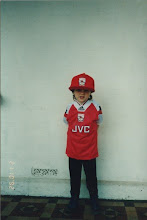
Annie Leonard yet again delivers on one of her rampages into the flaws of human beings.
This time, bottled water is taking the beating... but she has a point.
Consumers are extremely stereotypical because... well, we keep on consuming. Constantly consuming in the consumer world we've created for consumers. If I say consumer one or two more times, it might have the same annoying penetration effect like when Annie says it.
However, we do live in a consumer world and bottled water can be used to demonstrate a prime example of what industrial designers need to change .
Presented by Leonard is a clear argument stating how and why bottled water is awful for us. The damage it's doing financially, but more importantly, environmentally.
Industrial designers should grasp the evidence presented (as long as it's true) and act upon it. We need to give thought into what bottled water ACTUALLY is. It's water... in a bottle. Not some sort of consumer fashion accessory which it is turning into. Where it's fashionable to be seen with a bottle and then just throw it away.
Industrial designers need to delve deeper into these issues that Annie Leonard presents.
Re-use, recycling, filtration... these are all renewable options that can be looked into to take away from the damaging cycle that is being formed. The design community has a path to follow and it needs to start walking.





.jpg)
























